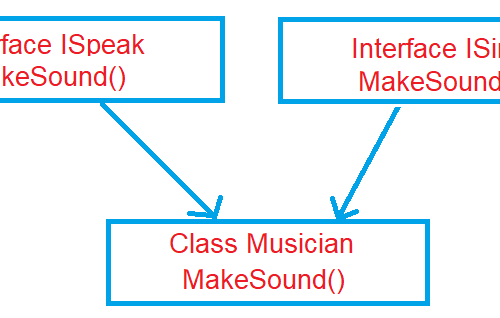
Mastering the Factory Design Pattern in c# :Benefits of Using the Factory Design Pattern in C#
Introduction
The “Factory Design Pattern in C#” offers a versatile solution in the dynamic realm of software development, addressing the efficient creation and management of objects – a cornerstone of writing robust, maintainable code. Design patterns are the keys to recurring challenges, and within these patterns, the Factory Design Pattern stands out. This article serves as your compass, guiding you through the intricacies of the Factory Design Pattern, specifically within the context of C# programming. As we delve into this exploration, you’ll amass a comprehensive toolkit, empowering you to optimize your object creation practices and seamlessly streamline your codebase.
Discover a wealth of C# interview questions by visiting our page on C# interview questions: C# Interview Questions.
Table of Contents
Before Using the Factory Design Pattern
Consider a scenario where you’re building a software application that processes various types of documents: PDFs, Word documents, and Excel spreadsheets. In the initial stages, you might create separate classes for each document type, each with its own constructor and methods. The code might look like this in C#:
// Without Factory Design Pattern
class PDFDocument
{
public PDFDocument()
{
// PDF document initialization
}
public void Open()
{
// Open PDF logic
}
// Other PDF-specific methods
}
class WordDocument
{
public WordDocument()
{
// Word document initialization
}
public void Open()
{
// Open Word logic
}
// Other Word-specific methods
}
class ExcelDocument
{
public ExcelDocument()
{
// Excel document initialization
}
public void Open()
{
// Open Excel logic
}
// Other Excel-specific methods
}
Issues with the Initial Approach
- Code Duplication: Each document class duplicates the initialization and opening logic, leading to maintenance challenges.
- Lack of Flexibility: Introducing a new document type would require creating a new class and modifying the client code.
- Maintenance Complexity: As the application grows, managing multiple classes becomes cumbersome and error-prone.
Using the Factory Design Pattern
Now, let’s explore how the Factory Design Pattern can transform this approach. Instead of directly creating document objects using constructors, you’ll utilize a factory method within a Factory class to handle object creation.
Explore the SOLID principles in C# for building robust and maintainable software architectures.
// With Factory Design Pattern
interface IDocument
{
void Open();
// Other document methods
}
class PDFDocument : IDocument
{
public void Open()
{
// Open PDF logic
}
// Other PDF-specific methods
}
class WordDocument : IDocument
{
public void Open()
{
// Open Word logic
}
// Other Word-specific methods
}
class ExcelDocument : IDocument
{
public void Open()
{
// Open Excel logic
}
// Other Excel-specific methods
}
class DocumentFactory
{
public IDocument CreateDocument(string documentType)
{
switch (documentType)
{
case "PDF":
return new PDFDocument();
case "Word":
return new WordDocument();
case "Excel":
return new ExcelDocument();
default:
throw new NotSupportedException("Invalid document type");
}
}
}
Benefits of the Factory Design Pattern
- Code Centralization: Creation logic is centralized within the
DocumentFactoryclass, making it easier to manage and modify. - Enhanced Flexibility: Introducing a new document type involves adding a new class and updating the factory method, minimizing impact on existing code.
- Improved Maintainability: As your application expands, the organized structure simplifies maintenance and debugging.
Conclusion
The Factory Design Pattern empowers you to craft objects efficiently, contributing to code that’s more flexible, readable, and maintainable. By embracing this pattern in C#, you’re equipping yourself with a potent strategy to tackle object creation challenges. This article has equipped you with an in-depth understanding of the Factory Design Pattern, factory methods, and their practical applications. With this newfound knowledge, you can confidently approach complex object creation scenarios and construct smarter, more sophisticated software systems.
Explore the world of dictionaries in C# programming to efficiently manage and manipulate key-value pairs.
FAQ’s
What is the Factory Design Pattern?
The Factory Design Pattern is a creational pattern that promotes object creation through factory methods, enhancing flexibility and code maintainability.
How does the Factory Design Pattern work in C#?
In C#, the Factory Design Pattern involves using factory methods within a factory class to create objects based on conditions. This promotes centralized object creation and code organization.
What is a Factory Method?
A Factory Method is a key concept in the Factory Design Pattern. It’s a method responsible for creating objects without exposing the instantiation logic. It’s often implemented in a base class or interface.
How does the Factory Pattern improve code quality?
The Factory Pattern improves code quality by centralizing object creation, reducing code duplication, and enhancing readability. It simplifies adding new object types and makes maintenance easier.
What is the difference between Factory Pattern and Factory Method Pattern?
The Factory Pattern is a broader concept that involves using factory methods for object creation. The Factory Method Pattern is a specific implementation of the Factory Pattern, focusing on creating objects through methods in derived classes.
What is the role of a Factory Class in the Factory Design Pattern?
The Factory Class encapsulates the creation logic for objects. It provides a centralized place to manage object creation, making the codebase more organized and maintainable.
Can you provide a real-world example of the Factory Design Pattern in C#?
Certainly! Consider a payment gateway system where you need to process payments through PayPal, CreditCard, and Bitcoin. The Factory Pattern can create the appropriate payment gateway objects based on user input.
How does the Factory Design Pattern enhance flexibility?
The Factory Design Pattern enhances flexibility by allowing you to add new object types without modifying existing code. You only need to update the factory class and potentially create a new object class.
What are some benefits of using the Factory Design Pattern in C#?
Benefits include code centralization, improved code readability, ease of adding new object types, and simplified maintenance. It also promotes adhering to the open-closed principle.
Is there a Factory Pattern example in C# I can refer to?
Certainly, the example in this article illustrates creating different payment gateway objects using the Factory Design Pattern in C#. It showcases how to leverage the pattern for efficient object creation.
How does the Factory Method Design Pattern in C# differ from other design patterns?
The Factory Method Design Pattern focuses on creating objects in derived classes through factory methods. It’s distinct from other creational patterns like Singleton or Builder, which tackle different aspects of object creation and structure.
Can you provide a simple Factory Design Pattern example step-by-step?
Of course! Suppose you’re creating a vehicle management system. You can use the Factory Design Pattern to create different vehicle objects (car, bike) based on user choices while keeping the creation logic isolated in a factory class.
Are there any practical Factory Pattern C# examples available?
Certainly, you can find practical examples of the Factory Pattern in C# across various online resources and tutorials. They demonstrate real-world scenarios and show how to implement the pattern effectively.
How does the Factory Design Pattern simplify maintenance in C# projects?
The Factory Design Pattern simplifies maintenance by containing object creation logic within the factory class. This separation of concerns makes modifying or adding new object types less error-prone and more manageable.
Can you share a Factory Pattern C# example for better understanding?
Certainly! Imagine a scenario where you’re developing a game with different enemy types. Using the Factory Pattern, you can create enemy objects based on game levels, ensuring consistent and controlled object creation.
What’s the significance of Factory Method C# examples for beginners?
Factory Method C# examples are essential for beginners as they illustrate how to implement the pattern step by step. These examples help newcomers understand the pattern’s practical benefits and application in real-world scenarios.
How does a Factory Design Pattern C# example contribute to software design skills?
A Factory Design Pattern C# example enhances software design skills by showcasing how to create efficient, scalable, and maintainable code. It encourages adherence to design principles and patterns that yield robust software architectures.
Can you guide me through a Factory Pattern C# example to create different shapes?
Certainly! In a scenario where you’re working on a graphics application, you can use the Factory Pattern to create different shapes (circle, rectangle, triangle) based on user input. This approach streamlines object creation and promotes extensibility.
What’s a Factory Pattern C# example that demonstrates creating database connections?
In a database application, a Factory Pattern C# example can help create different database connection objects (SQL Server, MySQL) using a common interface. This approach abstracts the connection details and simplifies database interactions.
Remember, mastering design patterns like the Factory Pattern requires practice and experience. By incorporating these concepts into your projects, you’ll elevate your coding prowess and contribute to the development of robust, adaptable software.




